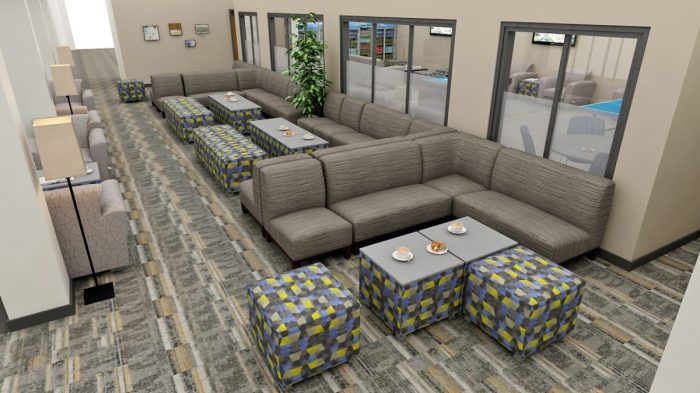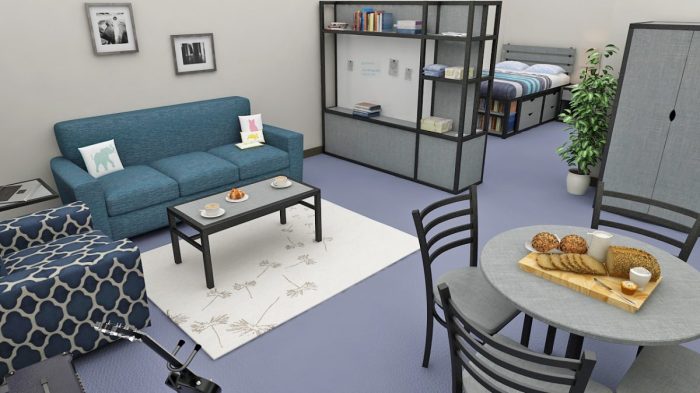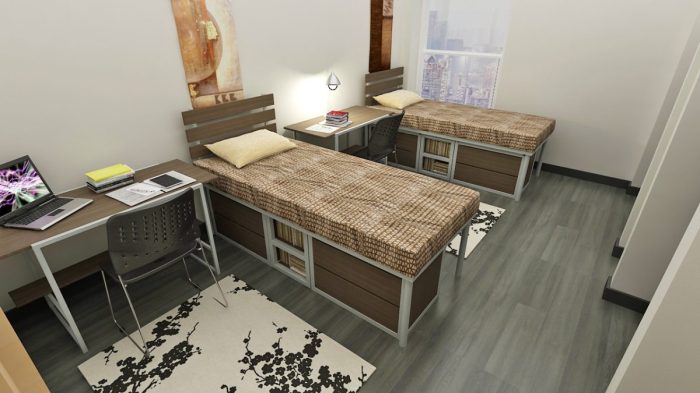Ecologic furniture has emerged as a compelling choice for discerning consumers seeking a harmonious balance between environmental consciousness, durability, and aesthetic appeal. Crafted from eco-friendly materials, employing sustainable manufacturing processes, and designed for longevity, ecologic furniture offers a myriad of benefits that extend beyond aesthetics, contributing to a greener planet and a more sustainable lifestyle.
From the sourcing of raw materials to the final production stages, ecologic furniture prioritizes minimizing environmental impact. Sustainable manufacturing techniques reduce waste and emissions, while durable designs ensure longevity, reducing the need for frequent replacements and contributing to a circular economy.
Eco-friendly Materials

The furniture industry has a significant impact on the environment, from the extraction of raw materials to the manufacturing and disposal of products. Eco-friendly furniture offers a more sustainable alternative, utilizing materials that minimize environmental harm and promote resource conservation.
Sustainable materials used in furniture making include:
- Recycled materials:These materials are derived from post-consumer or post-industrial waste, reducing the need for virgin resources and minimizing landfill waste.
- Reclaimed materials:These materials are salvaged from old buildings or structures, giving them a new life while preserving their character and reducing the demand for new materials.
- FSC-certified wood:This wood is harvested from responsibly managed forests, ensuring sustainable forestry practices and protecting biodiversity.
- Bamboo:A rapidly renewable resource, bamboo is known for its durability and versatility, making it an excellent choice for eco-friendly furniture.
- Natural fibers:Materials such as cotton, wool, and linen are biodegradable and renewable, offering a sustainable alternative to synthetic fibers.
Environmental Benefits
Using eco-friendly materials in furniture making offers numerous environmental benefits:
- Reduced deforestation:Sustainable materials, such as FSC-certified wood and bamboo, help reduce deforestation by promoting responsible forestry practices.
- Minimized landfill waste:Recycled and reclaimed materials divert waste from landfills, reducing methane emissions and conserving valuable resources.
- Lower carbon footprint:Eco-friendly materials often have a lower carbon footprint compared to traditional materials, as they require less energy to produce and transport.
- Improved air quality:Natural fibers, such as cotton and linen, absorb pollutants from the air, improving indoor air quality.
- Enhanced biodiversity:Sustainable forestry practices promote biodiversity by protecting habitats and wildlife.
Sustainable Manufacturing Processes

Ecologic furniture production employs sustainable manufacturing processes that minimize environmental impact and promote resource conservation.
Reducing waste and emissions is crucial in furniture manufacturing. Sustainable practices aim to reduce the generation of harmful substances, conserve energy, and minimize the use of hazardous materials.
Innovative Sustainable Manufacturing Techniques
- Closed-loop manufacturing:Utilizes waste materials from the production process as raw materials for new products, reducing waste and promoting resource efficiency.
- Energy-efficient equipment:Advanced machinery and tools optimize energy consumption, reducing the carbon footprint of production.
- Renewable energy sources:Employing solar, wind, or geothermal energy to power manufacturing facilities, reducing reliance on fossil fuels.
- Sustainable packaging:Using biodegradable or recyclable packaging materials to minimize waste and protect the environment.
- Water conservation:Implementing water-saving technologies and practices to reduce water consumption during production.
Design for Durability
Ecologic furniture is designed to withstand the test of time, ensuring its longevity and durability. This not only benefits the environment by reducing waste and the need for frequent replacements but also provides economic advantages for consumers.Durable furniture is less likely to break or deteriorate, which means it requires fewer repairs and replacements over its lifetime.
This can save money in the long run and reduce the environmental impact associated with manufacturing and disposing of new furniture.Some design features that enhance furniture durability include:
Solid Wood Construction
Solid wood furniture is generally more durable than furniture made from particleboard or MDF, as it is less susceptible to warping, cracking, and other damage.
Reinforced Joints
Well-crafted furniture features reinforced joints, such as dovetail joints or mortise and tenon joints, which provide superior strength and stability.
In today’s environmentally conscious era, ecologic furniture has gained immense popularity. Its sustainable and eco-friendly nature makes it a wise choice for both homes and offices. If you’re seeking a wide selection of ecologic furniture, consider visiting the raymour and flanigan furniture website . With their commitment to eco-friendly practices, you can find an array of stylish and durable pieces that align with your environmental values.
High-Quality Finishes
Durable finishes, such as polyurethane or lacquer, protect furniture from scratches, stains, and fading, ensuring its appearance and functionality for years to come.
Ecologic furniture, crafted from sustainable materials, promotes environmental consciousness while enhancing your home’s aesthetics. If you’re seeking budget-friendly options, consider using the macys furniture coupon code to explore their vast selection of eco-friendly furniture pieces. Embrace the beauty and responsibility of sustainable living with ecologic furniture, making your home both stylish and environmentally responsible.
Aesthetics and Comfort

Ecologic furniture strikes a harmonious balance between aesthetics and comfort, proving that sustainability and style can coexist. By employing thoughtful design principles and eco-friendly materials, manufacturers craft furniture pieces that are both visually appealing and provide a comfortable experience.
The use of natural materials like wood, bamboo, and organic fabrics brings a touch of warmth and organic beauty to ecologic furniture. These materials possess inherent textures and patterns that add visual interest and create a connection with nature. Designers carefully consider the grain patterns of wood, the subtle variations in bamboo fibers, and the soft textures of organic fabrics to create visually stunning pieces.
Design for Comfort
Comfort is an essential aspect of furniture design, and ecologic furniture excels in this area. Ergonomic principles are applied to ensure that furniture pieces provide proper support and comfort for the human body. The shapes and contours of chairs, sofas, and beds are carefully designed to cradle the body and minimize pressure points.
Additionally, ecologic furniture often incorporates adjustable features, such as reclining mechanisms and adjustable headrests, to cater to individual preferences and provide optimal comfort.
Examples of Ecologic Furniture Designs
- Reclaimed Wood Dining Table:A dining table crafted from reclaimed wood combines rustic charm with a modern aesthetic. The natural imperfections and patina of the wood add character and warmth to the dining space.
- Bamboo Sofa with Organic Cotton Upholstery:A sofa upholstered in organic cotton offers a soft and breathable seating surface, while the bamboo frame provides durability and a touch of eco-consciousness.
- Ergonomic Office Chair:An office chair designed with ergonomic principles provides ample support for the back, neck, and arms, ensuring comfort during extended work sessions.
Market Trends and Consumer Demand: Ecologic Furniture
The demand for ecologic furniture has witnessed a significant surge in recent years. This growing trend is largely driven by heightened environmental awareness and evolving consumer preferences.
Consumers are becoming increasingly conscious of the environmental impact of their purchases, leading them to seek out sustainable and eco-friendly options. Moreover, changing lifestyles and values have fostered a greater appreciation for products that align with ethical and responsible consumption practices.
Ecologic furniture prioritizes environmental sustainability, using materials like recycled wood and organic fabrics. For a premium selection of eco-friendly pieces, consider raymore and flanigan furniture . Their commitment to ecologic practices ensures that their furniture meets high standards of environmental responsibility.
By choosing ecologic furniture, you not only enhance your living space but also contribute to a greener planet.
Target Audience
The target audience for ecologic furniture encompasses a diverse range of individuals and groups:
- Eco-conscious consumers:Individuals who prioritize environmental sustainability and seek to minimize their ecological footprint.
- Health-conscious consumers:Individuals concerned about the potential health risks associated with conventional furniture materials, such as formaldehyde and VOCs.
- Design-oriented consumers:Individuals who appreciate the aesthetic appeal of ecologic furniture, which often incorporates natural materials and sustainable design principles.
- Businesses and organizations:Companies and institutions seeking to align their operations with environmental and social responsibility goals.
Conclusive Thoughts
In an era of growing environmental awareness and changing consumer preferences, ecologic furniture has captured the attention of a discerning clientele. Its combination of sustainability, durability, and aesthetic appeal makes it an ideal choice for those seeking to furnish their homes with both style and conscience.
As the demand for ecologic furniture continues to rise, manufacturers are responding with innovative designs that seamlessly blend form and function, offering a wide range of options to suit diverse tastes and needs.
FAQ
What are the benefits of using ecologic furniture?
Ecologic furniture offers numerous benefits, including reduced environmental impact due to sustainable materials and manufacturing processes, enhanced durability leading to reduced waste and resource consumption, and improved indoor air quality by minimizing the release of harmful chemicals.
How can I identify ecologic furniture?
Look for certifications and labels from reputable organizations that verify the use of sustainable materials and manufacturing practices. Additionally, consider the materials used, opting for natural, renewable, and recycled options.
Is ecologic furniture more expensive than traditional furniture?
While ecologic furniture may have a higher initial cost compared to traditional furniture, its durability and longevity often result in long-term savings. Additionally, the environmental benefits and reduced maintenance costs can offset the initial investment.